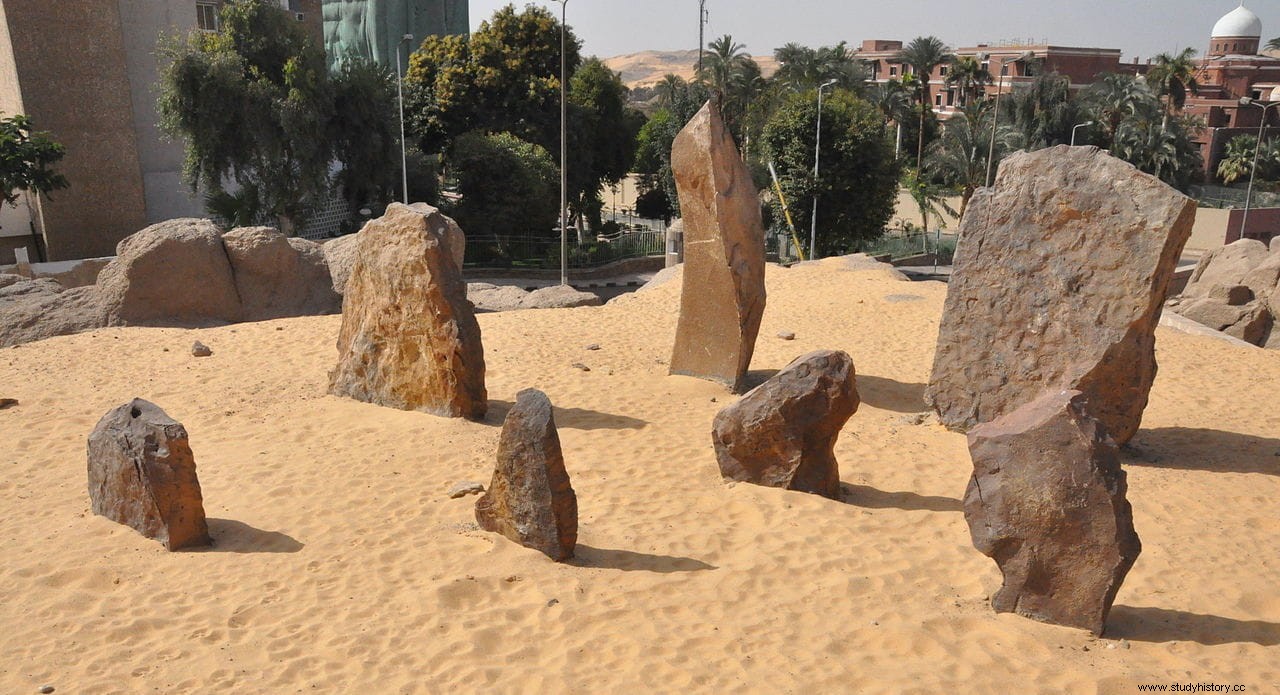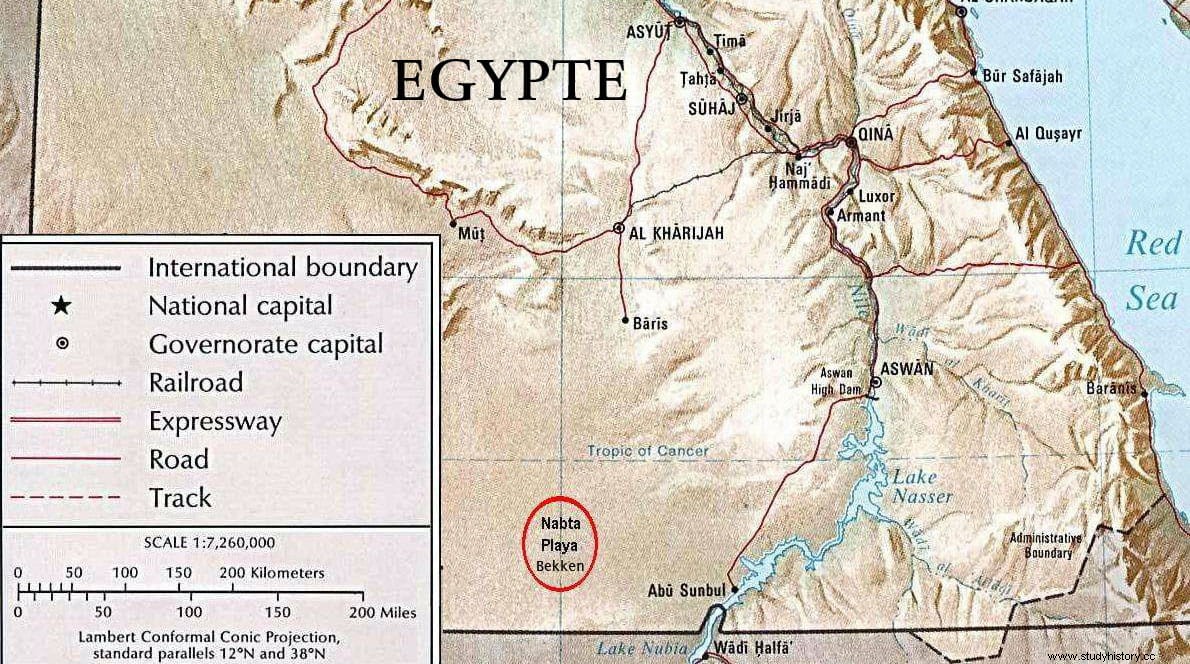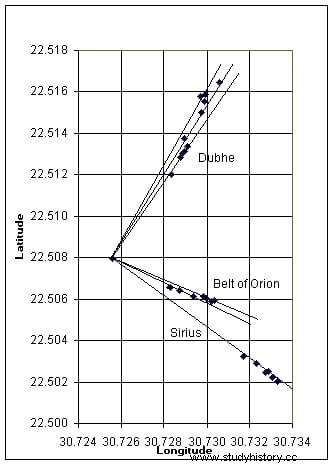130,000-70,000 years ago the Egyptian region known as Nabta Playa , today desert, was a savannah with abundant vegetation and wild fauna. Buffaloes, giraffes, antelopes and gazelles populated this endorheic basin with rainfall reaching 500 mm. annuals, and that came to have a large lake. Archaeological discoveries indicate that human presence dates back to at least the tenth millennium BC. There, among the many sites scattered around the area, is a small cromlech, built about a thousand years before Stonehenge.
Nabta Playa is located in the Nubian desert, about 800 kilometers south of Cairo and 100 kilometers west of Abu Simbel. The discoverer of its archaeological value was Fred Wendorf (who passed away in 2015), who with the linguist Christopher Ehret concluded that the inhabitants of this area must have been shepherds. There is evidence that wild sorghum was consumed and stored, and examples of pottery adorned with intricate geometric shapes have been found. The osteological analyzes carried out by Wendorf suggest that they came from sub-Saharan Africa.

For the seventh millennium B.C. settlements grew with houses built in neat rows, according to a predetermined plan, and the digging of deep water wells, while subsistence was based on the consumption of fruits, vegetables and sorghum. At some point in the millennium they began importing goats and sheep from the Near East. In general, the archaeological discoveries reveal that they had a higher degree of organization than their contemporaries in the Nile Valley , but also that they were seasonal settlements, which were only inhabited in the summer months, when the lake had enough water to water the cattle.
In the sixth millennium there is already evidence of prehistoric cults with animal sacrifices and burials in stone-covered chambers, which some researchers relate to an early evolution of the cult of Hathor. Other underground structures found in the area led Wendorf to consider them the oldest examples of sculpture in Egypt.
A millennium later, during 5th BC, the people of Nabta Playa developed some of the oldest archaeoastronomical instruments in the world, contemporary with the Goseck Circle in Germany and the Mnajdra complex in Malta. These instruments consisted of alignments of stones that may have served to indicate the appearance of some stars, or as a calendar that indicated the approximate direction of sunrise at the summer solstice. Up to 6 alignments have been found . The most famous of all is the little cromlech which consists of 30 stones arranged in a circle with another six inside, and whose dating goes back to about a thousand years before the construction of Stonehenge . The other 5 alignments are arranged around it in a radial manner.

Thomas G. Brophy's hypothesis is that the three interior stones to the south of the circle or Nabta Playa cromlech represent the three stars of Orion's Belt , while the other three refer to the shoulders and head of Orion, its main star. This correspondence with the position of the stones is repeated approximately every 25,000 years, and the last one would have occurred around 6400-4800 BC
The other five radial alignments would be, always according to Brophy, ways of representing the celestial places where the stars represented by the central stones of the calendar are found during the heliacal rising, that is, at the time of their first appearance on the eastern horizon. Therefore, the set would be a conceptual representation of the celestial movement during a precession cycle.

A study conducted by the University of Colorado in 2007 concluded that Brophy's proposed alignment dates were off by at least 1,500 years. His theories have been widely criticized, given his tendency to include aliens in the thick of it.
Archaeologists from the University of Colorado proposed that the area would have been a ceremonial center around 6100-5600 BC, where people from different places would congregate to perform animal sacrifices, evidenced by the large number of remains found in ancient beach from the lake. Around 5500 BC. more organized groups began to use the place and built burial chambers and other burial mounds. About 4800 BC. the cromlech would have been raised, aligned approximately with the summer solstice. More complex structures would follow during a period from 4500 to 3600 BC
Satellite and GPS measurements were also made, which confirmed a possible alignment with Sirius, Arthur, Alpha Centauri and Orion's Belt . In their study they suggest that the repetitive orientation of the megaliths, stelae, human and animal tombs found, reveal a very early symbolic connection with the North. Their conclusions were that the symbolism derived from the archaeological records of Nabta Playa in the Fifth millennium B.C. it is very basic, and focused on questions of practical importance to a nomadic people:cattle, water, death, land, sun and stars .
